The ‘Holy Grail’ of eating well may be to consume healthy foods that leave you feeling full and satisfied after eating. This is perhaps the best way to both eat the right amount of food for your body and to avoid filling up on nutrient-less “junk” foods.
In fact, foods that fill you up and satisfy hunger have multiple benefits, going far beyond appetite control.
So without further ado, here’s a closer look at the benefits of feeling full after eating, what makes certain foods more satisfying, and the most filling foods straight from nature.
The Benefits of Feeling Full & Satisfied
Why is it beneficial to feel full and satisfied after eating?
The most straightforward answer is that feeling full helps keep your appetite in line. If you’re eating foods that leave you hungry again an hour or two later, it’s easy to reach for an unhealthy snack. But if you feel nicely filled up for several hours after eating, it’s much easier to fight temptation and stick to a healthy eating plan.
Of course, one of the most obvious further benefits of this is weight management.
Hunger is a signal to your body that it’s time to eat. When it hits, you are likely to not only eat more than you should, but also to reach for whatever is closest to hand— healthy or not. This can quickly sabotage even the best weight loss or maintenance plan.
However, feeling full goes far beyond simply your weight.
In general, the most filling foods are also dense in nutrients, especially the plant-based ones. Most processed foods will leave you empty after a short period of time and don’t provide your body with much that’s good.
By choosing healthy foods that fill you up, your body gets the nutrition it needs, and cravings tend to decrease as a bonus. (After all, your body is after nutrients, though we often judge food by how it tastes. If it gets satisfied, it won’t be sending you signals to keep eating.)
And as a final note, feeling full also helps the people around you by keeping you from becoming “hangry”— irritable or bad-tempered from hunger!
What Makes a Food Filling?
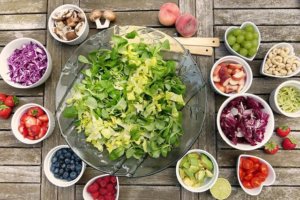
The technical term for feeling full and satisfied after eating is satiety. Foods with a higher satiety index are more filling, while those with a lower score are less filling.
You can get a general idea of which foods will help you stay full for longer by looking at a few characteristics:
- Fiber Content— Fiber is greatly lacking in the standard western diet, which is unfortunate because it’s very filling. It draws water into your digestive tract as it moves through, which helps create a sensation of fullness. Studies show that it may slow digestion as well, further increasing satiety. Fiber also normalizes bowel movements, supports your gut microbiome, and may even help you live longer!
- Protein— Protein is a macronutrient that increases satiety and helps control hunger. Researchers believe it has this effect because it takes longer to digest than carbohydrates but also because it alters levels of satiety-related hormones like ghrelin and glucagon-like peptide 1.
- Low Energy Density— Foods with a low energy density tend to be high in water and fiber but low in fat and calories. Obviously, fat is an important part of the diet, so you don’t want to restrict yourself to these foods all the time, but they are generally more filling than high energy density foods.
To give you specific options to choose from, here is a list of nature’s most filling vegetables, fruits, grains, and more. As always, consider choosing organic varieties of these foods, especially those whose skin / outer layer you consume.
The Most Filling Foods Straight from Nature
Potatoes
Potatoes have been regarded as unhealthy in the past, but they are actually extremely nutritious— and very filling.
Loaded with nutrients like potassium, vitamin C, magnesium, manganese, phosphorus, and B vitamins, potatoes have decent amounts of fiber and water as well as a moderate amount of protein. When compared with 37 other foods in one study, potatoes ranked the highest for satiety.
Potatoes also contain something known as resistant starch that feeds the good bacteria in your gut and may help with blood sugar control.
Always keep the skin on your potatoes, since this is where much of the nutrition — including most of the fiber and minerals — are found.
Oats/Oatmeal
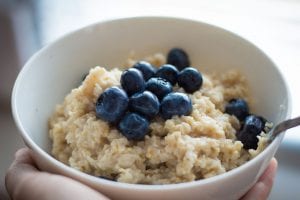
Oats are one of the most filling grains due to their high soluble fiber content. Studies have found that oatmeal, in particular, increases satiety and decreases appetite for hours after eating it.
A particular soluble fiber in oats, beta glucan, seems to be mostly responsible for these effects. The exact way it works is still being researched, but there is some indication that it may stimulate the release of satiety hormones. As an added benefit, it also supports heart health and has shown anti-diabetic properties.
Consider opting for steel cut oats, which are minimally processed, provide more nutrients than other oat varieties, and are particularly high in fiber.
Avocados
Is there anything avocados can’t do? They are one of the most nutritious fruits you can eat and one of the most filling foods as well.
Even though avocados are rich in fat (which tends to be less filling), they are also packed with fiber— almost 14 grams per avocado! This alone would help you to feel full and satisfied after eating, but avocados have an additional boost from 4 grams of protein per fruit.
Eating an avocado a day also gets you loads of nutrients like vitamin C, vitamin E, vitamin K, B vitamins, magnesium, and potassium. It’s no wonder this superfood can fight inflammation, boost gut health, and much more!
Chickpeas
Chickpeas are a great example of a high fiber food that’s also rich in plant-based protein. This combination means that chickpeas are slowly digested by your body, keeping you feeling full for longer.
Along with this fiber-protein combination, chickpeas are absolutely packed with minerals, plus a few vitamins. Not only can you make them a part of satisfying meals, hummus as an afternoon snack has been shown to increase fullness and reduce appetite. One way to fight those afternoon cravings!
Apples
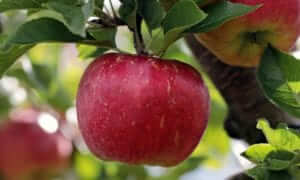
Apples are a very underrated fruit. They are an excellent source of fiber, particularly a soluble type known as pectin that helps to slow down digestion and increase feelings of fullness.
In fact, apple pectin has shown many benefits beyond just filling you up. It feeds the good bacteria in your gut, appears to help with blood sugar control, aids certain gastrointestinal problems, and may even fight cancer.
Keep the skin on apples for maximum fiber and nutrients, and eat regularly for health and a satisfied appetite!
Almonds (& Other Nuts)
Nuts are another example of a high protein plant food. This protein, combined with a decent amount of fiber, is what makes them one of the most filling foods and a particularly good snack food.
There are many healthy nuts to choose from: pistachios, walnuts, pecans, etc.
However, almonds really stand out as an all-around “super nut”. Studies confirm that they can make you feel full and satisfied after consuming them, and they also have an excellent nutrient content. Just a handful of almonds is rich in manganese, magnesium, and vitamin E as well as powerful antioxidants that protect your body from inflammation and disease.
Quinoa
Quinoa — technically a seed but classified as a whole grain — is gluten-free, naturally rich in fiber ,and a source of complete protein (meaning it contains all essential amino acids). As you know by now, this combination sets it up as a food to keep you feeling full.
When it comes to fiber content, quinoa beats out many other grains and comes in at about 5 grams of fiber per cup. It’s also rich in essential minerals like iron, zinc, magnesium, and manganese as well as folate and vitamin E.
To stay filled up for even longer, pair quinoa with a denser food like avocado.
Beans (& Other Legumes)
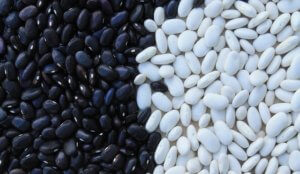
Chickpeas aren’t the only legume that will make you feel nice and full after eating them. Most legumes have that ideal combo of fiber and protein that promotes satiety.
Beans are the perfect example of this. They pack in lots of fiber, protein, and complex carbs as well as nutrients like iron, potassium, and folate. If you find them difficult to digest (as many do), soak them before cooking thoroughly. This reduces lectin content— the cause of bean “discomfort”.
Other filling legumes include lentils and peas, which also rate high on the satiety scale.
Broccoli & Other Cruciferous Veggies
Cruciferous vegetables have numerous outstanding health benefits, and you can add them to the most filling foods list. They are loaded with fiber and have a high water content, both of which take up space in your stomach and make you feel full.
Broccoli perhaps stands out from the rest because it has a good protein content to complement the fiber. Still, you can’t go wrong with other choices like cauliflower, Brussels sprouts, or cabbage.
No matter which cruciferous vegetable you choose, you’ll also be getting cancer-fighting compounds in every serving. Steam broccoli and related veggies for maximum nutrients and digestibility.
Bananas
Bananas are one of the more filling fruits with excellent fiber and water content. They contain resistant starch (the same type that’s in potatoes), which acts as a prebiotic and may further improve satiety.
As you may know, bananas are also an excellent source of potassium and contain a surprisingly high amount of vitamin C. The resistant starch in them has even shown promise for improving insulin sensitivity and blood sugar levels.
To make a banana more filling, pair it with a protein like nuts or nut butter. For the most resistant starch, choose slightly underripe bananas.
Berries
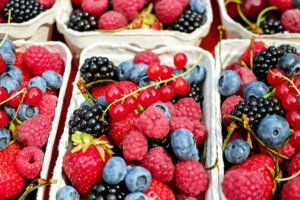
Berries may seem somewhat surprising as a filling food. After all, you can eat a large amount of them at one time almost like candy.
However, the high fiber and low calorie nature of berries gives them a lot of staying power when it comes to appetite. This is especially the case for berries high in pectin, which is the same fiber found in apples that can slow stomach emptying and increase feelings of fullness.
For maximum fiber content, go for blackberries or raspberries, which both check in at about 8 grams per cup. Again, pair them with a protein, like nuts, to stretch out the feeling of fullness.
Chia Seeds
Chia seeds may be tiny but they are bursting with fiber and protein. They also have a unique property that truly makes them one of the most filling foods, despite their size.
If you’ve ever soaked chia seeds, you’re already familiar with this property: the ability to pull in liquid and turn it into a gel-like substance. This is due to the high soluble fiber content of the seeds and happens in your gut, too, making you feel full.
In fact, some research shows that chia seeds can absorb up to 15 times their weight it water, which slows their passage through your digestive tract and maintains that feeling of fullness. Just a tablespoon or two a day can help keep your appetite in check.
Oranges
The same study that found potatoes had the top satiety score also ranked oranges high up. They actually had the same score as apples, likely due to their high fiber— and specifically pectin— content. Oranges have a high water content as well, which also helps you to feel full after eating them.
As you probably already know, opt for whole oranges over the juice to get all their filling fiber. You’ll also be feeding your body a great amount of immune-boosting vitamin C and anti-aging carotenoid antioxidants.
Celery
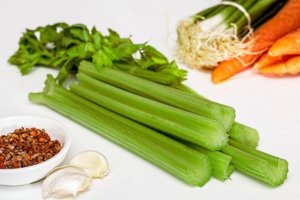
Though you may think of celery as all fiber, it’s mostly made up of water. It does still have a very decent fiber content, though, with about 2 grams in 2 medium stalks. This water-fiber combination is what helps you to feel full after eating it, particularly because part of the fiber is in the form of pectin.
If you need even more reasons to eat celery, it contains powerful compounds like apigenin and kaempferol that have antioxidant power. Eat it with natural nut butter or guacamole to stay full for even longer.
Pears
Pears are a very high fiber fruit, coming in at 4-6 grams per medium fruit. The fiber is a combination of both soluble and insoluble types, including a good amount of pectin. This high pectin content (as you probably guessed) plays a big part in making pears a surprisingly filling food, particularly when paired with a protein.
To get the most amount of fiber, leave the skin on your pears. This will give you the added bonus of an antioxidant boost, particularly when eating red pears.

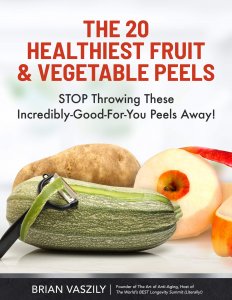
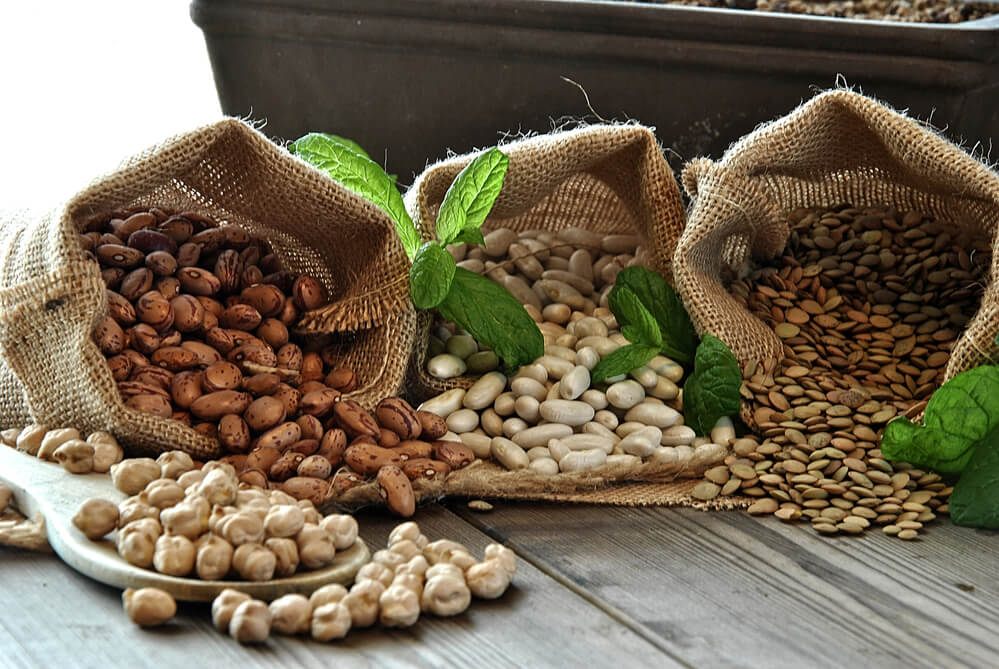

This is EXCELLENT! The explanations are very clear and helpful. I agree with everyone of the foods that you list, and you have picked the BEST!
Yes. I agree with you Evelyn!
Everyone of your emails is a Gem! I am not on Facebook and do not do Facebook, but, I would appreciate receiving via email the free booklet: “25 MOST NUTRIENT-DENSE FOODS ON THE PLANET.”
I have great respect for your knowledge of nutrition! Thank you in advance.
Thank you for these interesting, informative articles on natural eating (this one was The 15 Most Filling Healthy Foods!) I have always been a healthy type of cook, now on my way to being a biology teacher; so I appreciate all the knowledge. One thing I always look for at the end of an article is a listing of science journal sources to completely support the article-claims. (Such would be good inclusions to reference your papers.)
Julia: If you were to click on several of the blue “highlighted” words in many of the sections about foods that are filling or are healthful, you will find that those blue words take you directly to a research article that applies. I have been looking at the research articles and find them very helpful to fill in any gaps in my knowledge.
very informative thanks
Excellent, scientific advice! BW Lumi
Very interesting and helpful. Thank you
Thank you very good information
Great information ! Thank you.
Please note that almonds, which are grown in California, use a lot of water to produce. Since California is in an extreme drought, other seeds would be better for the environment. Thanks for considering this, and I hope you will note this in your recommendations.
Yes as do strawberries and avocados. Pistachios and walnuts are a better choice, but more expensive and not as popular. Sadly acres of old growth, stone fruit and walnut trees have been plowed under to make way for higher yield, more profitable produce that’s in high demand in the global market.
(just a nit: almonds are a nut, not a seed. ;-))
And in a nutshell-nuts are tree seeds
Very nice article Brian. Makes it easy to share with others over the holidays. And first class dad jokes. Thanks
If you buy almonds from Living Nutz they are from Spain I believe and truly organic unlike those grown in California where they have to spray them.
A serious and too-often overlooked downside to most of the almonds we buy, so thanks for pointing this out (California fires are still burning as I write this).
Although California produces nearly 80% of the world’s almonds (because of prime climate, soils, and vast industrial farming groves), they also grow well in Italy/Sicily, Greece, Spain, Morocco, Tunisia, Australia, Syria, Chile, Iran, Texas, Florida, and Arizona. Check country of origin next time you buy!
This the exact answer to my ongoing question about potatoes, oatmeal and oranges! A God wink! Thank you so much!
🤨😂 “pear pressure” ????
Great article. Very informative
Thanks, great list and I try to eat some of these daily and mostly, all organic. So far, at 81. I’m still healthy though atherosclerosis is closing in, (perhaps from not such a good diet when I was younger).
I have sent this on to my loved ones hoping they can change their diets sooner than I did.
Sincerely,
m
Hi Michael, your atherosclerosis is reversible with grapefruit pectin & certain herbs I cannot recall at the moment. They are out there if you do your research!! Look for “Top 26 herbs you have not heard of, but should be taking” by Jason Prall. I think they are in that list.
Excellent article…thank you.
This article is concise as well as complete bursting with information that most people can utilized to their advantage. Thanks for sharing this.
Thank you so much for this excellent article.
This is such an excellent article. Well done Brian for such an easy to understand list. Keep up the good work! Luckily I have been including many of these items in my diet on a daily basis. Yeah!
Excellent List. All my favorite foods.
Regarding the comment about almonds and high water use, what nut does not use large amounts of water. Or is there way to grow almonds without resorting to so much water?
Liz
Thanks for this article. Water can also be filling (for me), such as a large glass 15-20 minutes before the meal.
Have you considered the possibility that some people digest some of these foods better than others? Potatoes and beans make me bloated, gaseous, and constipated. I suspect that I am not alone.
Also, have you considered that starch, such as potatoes, quinoa, and oats, and protein, such as meat or eggs, are not digested well, if eaten at the same meal? (This reflects food combining, an old, often overlooked idea, it seems to me.
Try eating potato 20 minutes add to your meal you’ll have less gas
Love the article
I love to eat veggies when I can. Thanks for the information Brian. It sometimes hard to navigate through all the food reports.
Kirsten
Excellent article. I have shared it with many. Thanks.
i love this articled.
thank you for your continued helpful emails.
Thank you for letting us know how healthy potatoes are. I love them but my husband won’t let me eat them because I am diabetic (too much carbohydrates). He also won’t let me eat corn which I also love. I will also start to eat oatmeal after reading your article.
Could you possibly eat a small amount of the disallowed items then check your blood glucose level at one and two hours later once you’ve processed this food? Take the average of the two. Compare this to allowed diabetic foods. Maybe this can help your case if it shows no significant increase in blood glucose level. Cardiac research nurse here. Hope this helps!
won’t let you? giving up your power.
Potatoes with a peanut butter sauce will not only help enhance the protein profile but slow the starch/carb blood sugar spike making it suitable for T1. To say nothing of being just plain delicious. I add garbanzos and fresh steamed greens and feel like a 5⭐️ cook😱🤪👍
Sauce: mix pb with water, garlic and salt to taste ( I use amino acids). YumYumYum.
Thank you for explaining, in a small bite, what makes a food satisfying. I like all these foods-except quinoa-I’ve tried but I never do enjoy it. Regarding the water for almonds or any other plant-they only borrow the water. Water is continuously recycled. But availability in CA is a big problem of course, one that I hope we can solve in a natural way-permaculture?
Excellent article. We are printing and posting on kitchen wall. Thank you so much. BTW, we enjoy the Dad Jokes.
Many Thanks! Greatly appreciated!!!
Pretty much what I eat. The only thing I would like to add is sprouts. You can top off so many things with them and fill many nutritional needs.
Thanks as always for all your helpful info!!!! Any foods which you feel which are helpful to aide with osteoporosis??? Much appreciated.
Our family does an apple for breakfast first followed up by a half cup of chick peas that has been cooked in broth. It is so delicious and filling. This easily lasts everyone to lunch time to include my teenage boys. Before they’d complain about starving at school by time lunch rolls around. Sometimes we are out of chick peas so we substitute with lentils cooked in water and a couple eggs.
It’s great to get frequent inspiration. I have a lot of these good, nutritious foods in my kitchen already. I’m inspired to make sure they are available and that I’m reminded to make sure we eat them often.
Thank You for the article: it’s encouraging to find my choices back here, even though I sometimes doubt ‘do I make a right choice?’ regarding food. This after I lost a lot of weight with a low carb, high protein diet.
Thank you, Brian. This article is helpful. I agree with Benito that there’s those that can’t digest or atleast that is what the experts recommend that those with Crohn’s, IBD, not eat raw fruits or vegetables. This is advice I have not followed because I believe that raw fruits and vegetables’ benefits must outweigh the harm. I don’t know if I am right about that, but I don’t feel like cooking everything either. I really enjoy being on your list and getting all this information. It’s much appreciated. Mule
Reassuring that what I eat every day is on that list!
very informative and helpful. Thank you.
Thankyou for such an interesting and informative article. I eat a mainly plant based diet with all of the foods you mention being part of it. Sometimes if I feel the need for a quick snack I find medjool dates fill the craving.
Thank you for your kind endeavor in collecting the info!
Great article. Thank you for the information.
thank you so much Brian love Ur emails and jokes
Thank you, Brian, for all of the wonderful information you always
provide in your outstanding articles.
Enjoyed the article. I enjoy all the food mentioned. I especially enjoy celery with smooth peanut butter, or even with plain Greek Yogurt.
Great article. My favourite foods on the whole – thanks for the clear summary.
I know bananas a really good for you. I stay away from them. After hearing one banana gives a body all that sugar needs for the entire day. I thought if I eat a banana in the morning, which takes care of my hunger. Anymore, sugar intake, my body would be overloaded.
Thank you.
I always eat either a banana or an avocado every day & it never affects my blood sugar negatively. Perhaps the fiber helps or the fact that I often eat it with nuts!
As a well controlled type 2 diabetic I mostly avoid potatoes and bananas so I was surprised to read that they can actually help with blood sugar control. I might try them and see if it works for me. The other foods on the list I wouldn’t think twice about eating and enjoy all of them, but I’ve never tried quinoa. Don’t really know how to use it. Thank you for such a useful, informative article!
Wonderful information, very much appreciated
Not everyone agrees with keeping skins on potatoes. In fact, if they aren’t organic, peeling them is probably the best thing you can do!
All of my favorites except quinoa. I eat it because my dog likes it but otherwise I’m not a big fan. Great, informative article. Thank you!
Wonderful article! Excellent reading
Wonderful article, full of such important information, just like all your articles. Thank you so much. Your emails are the best! And your Dad jokes are amazing! Thank you so much.
This is an excellent material. It helped me do away with my misconceptions about certain foods. Thank you so much. Cheers for a healthier diet!
Thank you so much for the lists of most filling healthy foods. Very interesting and informative.
Thankful for the info, been incorporating some of these into my daily diet. 🙏🏽 U
Thank you for all this helpful tips to keep us healthy!
Well written article that contained some good choices of filling foods.
Thank you so much! You have a lot of well-informed readers/commenters, too, who make this even more helpful to readers. Awesome!
Thank you for all the work that you do and the information that you provide.
Hello Brian,
I really enjoyed this 15 most filling food article. Thank you so much for sharing this article with us. I made a list of all these food. I am not a big fan of beans but I like them when mixed with
other vegetables and meat like for instance beans with mixed veggies in a chipotle burrito.
I like the dad jokes as well. Thank you for this healthful tips.
Very good info
Hi Brian, I have been sampling a new Vespri Sungold 🌞 Kiwi Fruit a 53 grm contains 💯% Vitamin C, tropical taste of 🍯 honey & mango🥭 ,different from the Green 🥝as hairless ,as skin can be eaten so fibre for the gut, tastes 😋 DELICIOUS & great for the immune system. Get a chance buy & try one. Really🤔 enjoying all your information . Wendy. 🥰🇬🇧